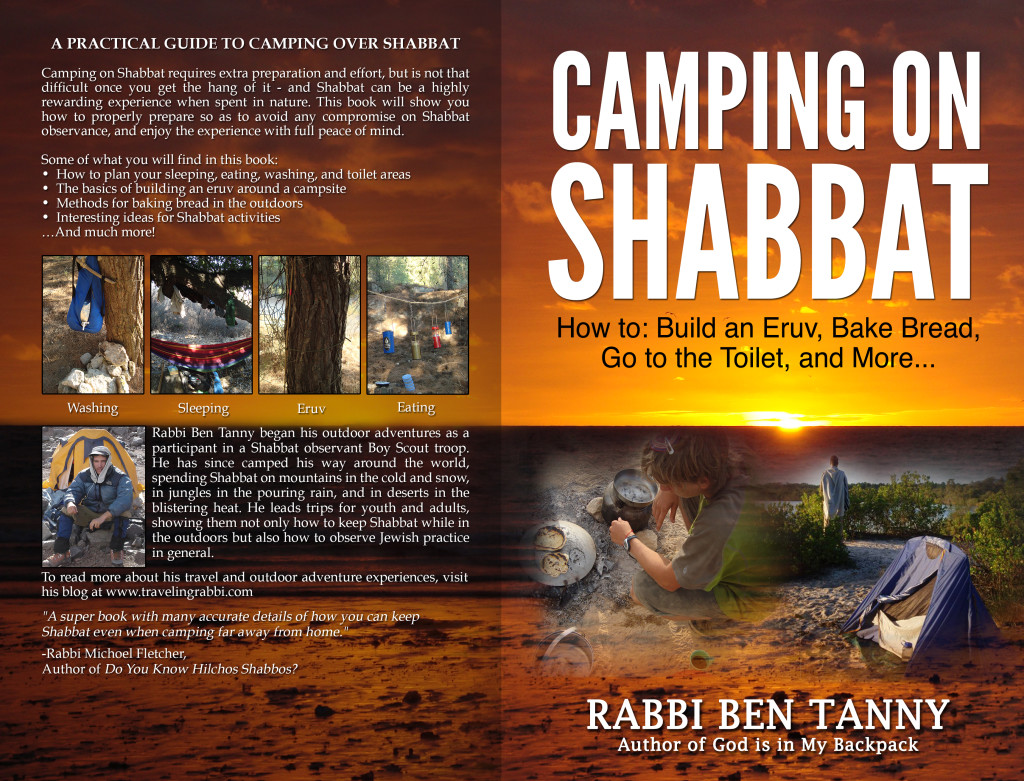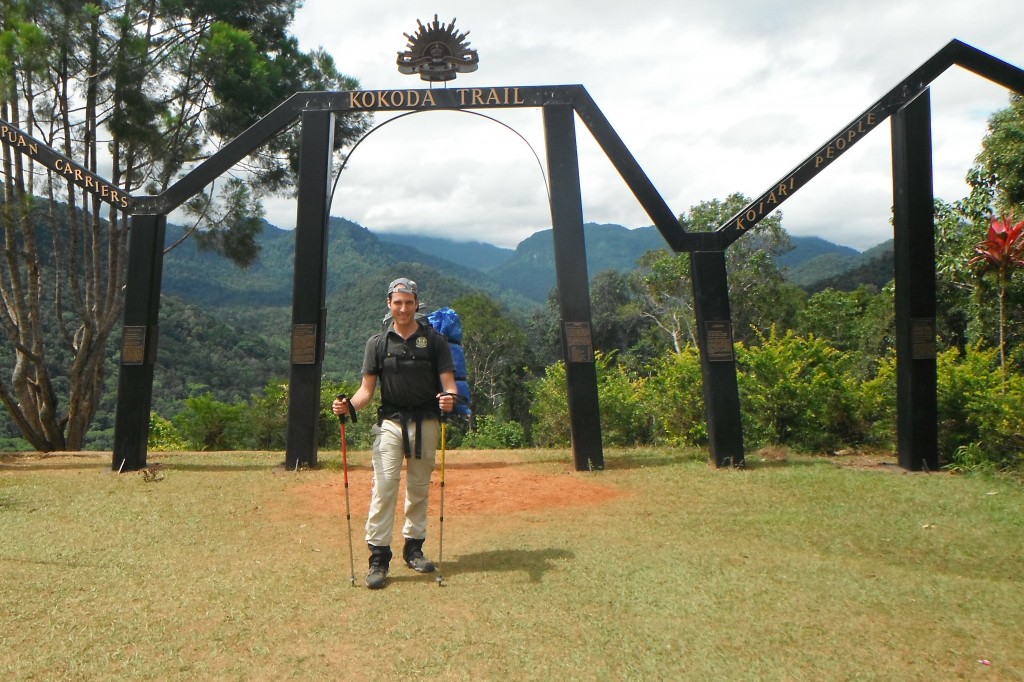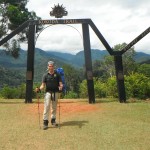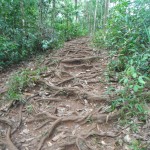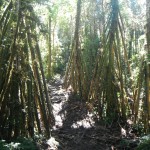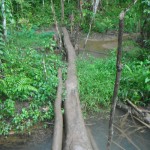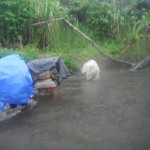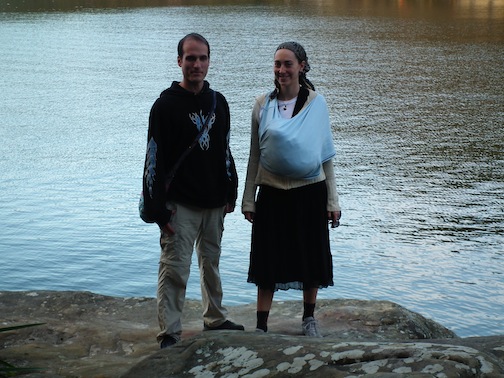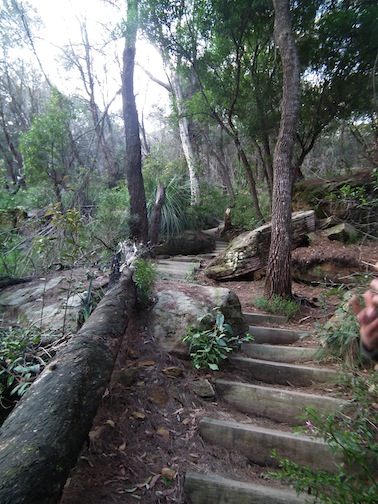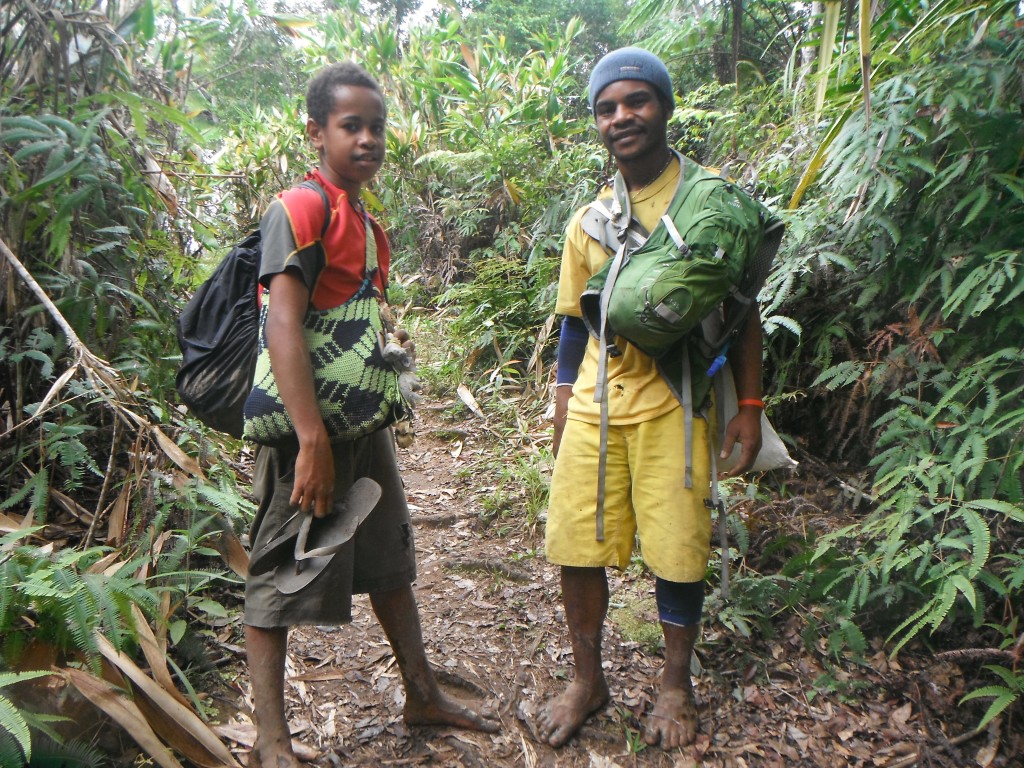
Some people I met along the Kokoda Trail in PNG
When I arrived in Port Moresby I found a guy I met on couchsurfing who manages a chartered airline company. He graciously let me stay with him and showed me around town (not much to see). In the afternoon I went to the Kokoda Track office and paid my permit fee ($150). The office insisted that I’d need a guide with me and so I agreed. They teamed me up with a guy named Wilson Batia whose brother David would be my guide/porter. Their family lived in a village along the track, and David had not been home to see them in over a year. Because of this they accepted a nominal fee, enough to pay our transport to the start of the trail, food for David, and a bit extra. (a few hundred dollars total) I was also excited about the idea of staying with their family as was the plan.
Knowing that David would be carrying some of my stuff I took an extra 10kg worth, like an extra book, item of clothing, etc. When we set out the next morning, I had two weeks’ worth of food for myself and around nine days’ worth for David.
We met at the market/bus station area the next morning. While David worked out finding us transport, Wilson, who has excellent English skills, gave me an hour-long tour of the market and introduced me to all the new fruits, vegetables, and nuts. Many things I would have never tried if it were not for him pointing them out. For example, pocari nuts, something like a cross between coconuts and brazil nuts. Wilson also explained many aspects of the culture which fascinated me.
We got to the start of the Kokoda Trail, Owens Corner, late morning after taking a public bus (didn’t cost much). We were the only ones there. I prayed Shacharit in tallit and teffilin, ate some breakfast, and we headed off.
There was a cloud cover that blocked out the sun and made the temperature bearable. The first section of the trail is steep (though I quickly learned that everything is steep along the Kokoda!) I had read a number of Kokoda Trail reports on the internet, where many of the people mentioned how much they fell and slipped in the first hour. Some of them spoke about how they had to walk a few kilometres just to get to the start of the trail because their vehicles could not get through the mud. I guess I was lucky as the ground was dry as a bone, and easy to go down.
Two weeks later when I came back in the pouring rain, the trail leading up to Owens corner was a mud slide. I would take two steps up and slide one down. Thus I can full appreciate, should anyone have been on their way down from Owen Corner on that day, they would be guaranteed multiple slips and falls. This overall was my understanding of the Kokoda Trail, that the weather plays an important part. It can go from pleasant to miserable very quickly: it starts to rain, the sun comes out, it gets cold, your attacked by millions of bugs, or maybe you are lucky and there are no bugs!
I was carrying around 25kg which was okay for me. I’m used to carrying a pack along trails. David on the other hand, was obviously struggling and sweating profusely. He complained of a sharp pain in his ribs and was struggling to breathe. He said it was from an earlier injury when he fell a couple of years ago. We only made it to the first camp stop where we spent the night. The next morning after an hour of slow walking where I was far in the lead I suggested to David that he turn around and go home. He was not happy about the situation but realized he could not continue. I gave some of the extra food we now had to a villager along the way, and the rest for David to take back with him.
With no guide, no porter and a 30kg pack, I headed out alone along the Kokoda Trail.
Previous posts on the Kokoda Trail:
Post 1
Post 2
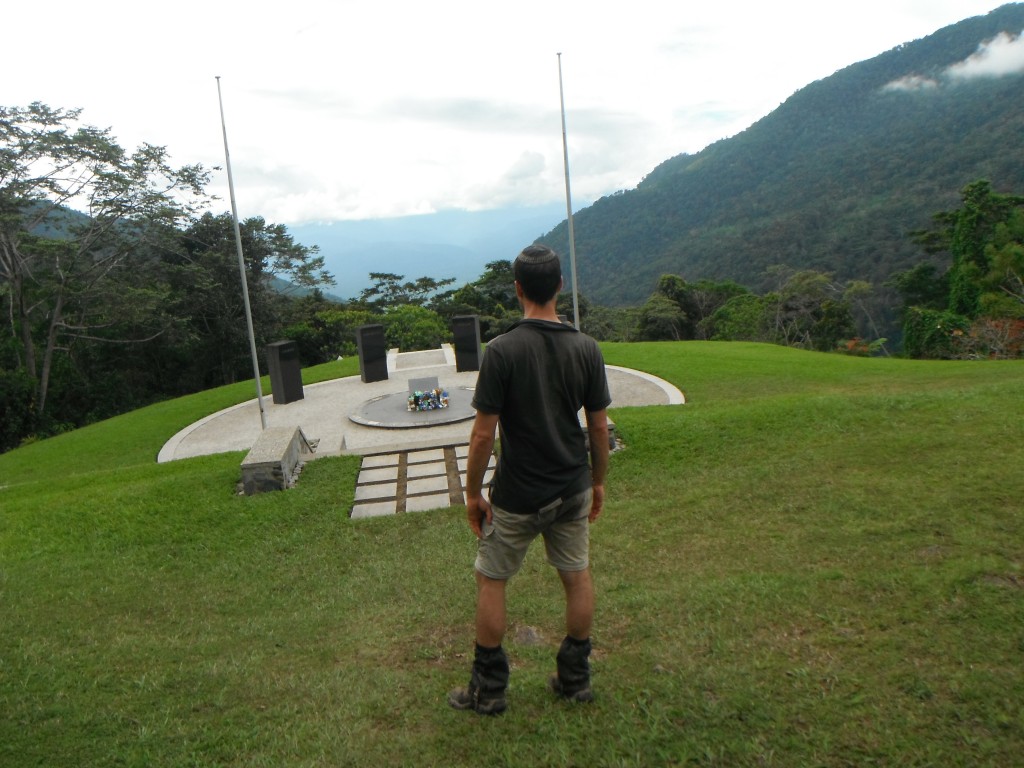
This is the famous war memorial commemorating the Australian diggers who fell along the Kokoda Trail. I am not yet up to this part in my story, though I post this picture in honor of today being ANZAC Day
Read More


